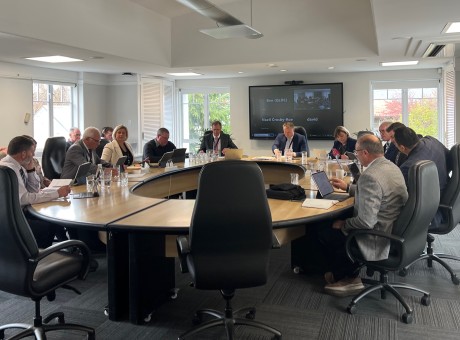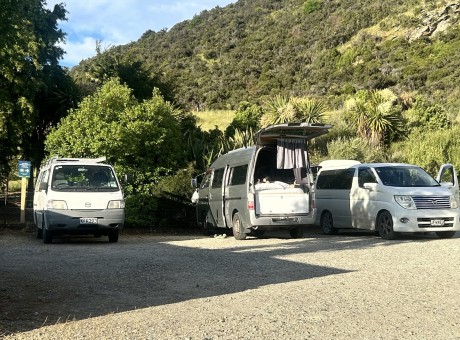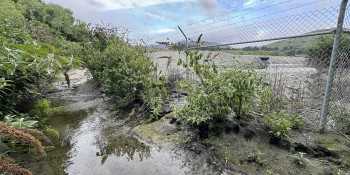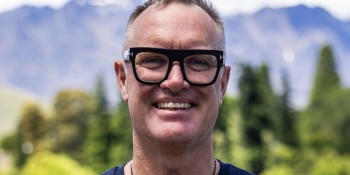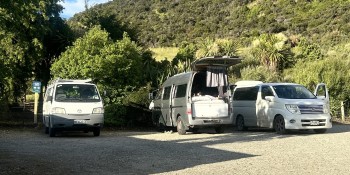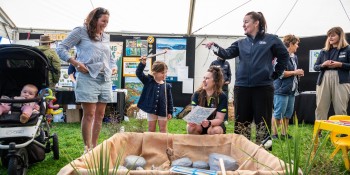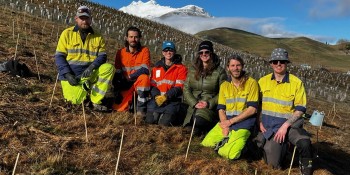Wine and mining industries face off in Otago
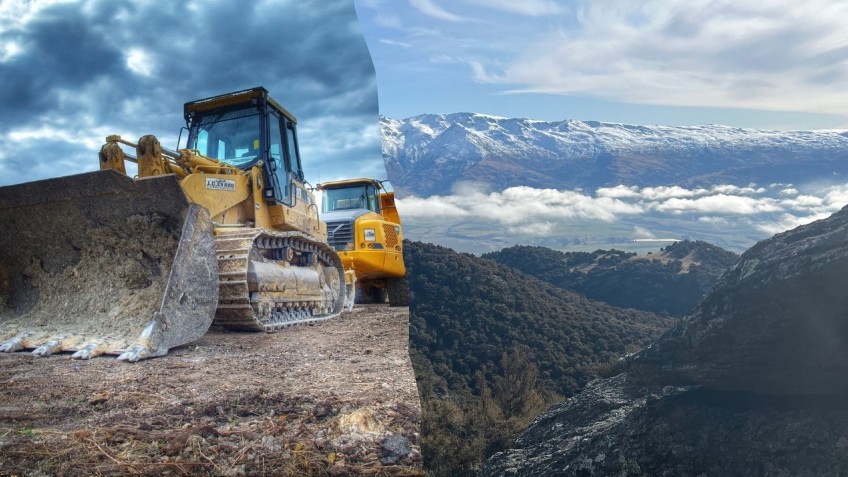
A sizeable gold mining site proposed for the hills above Cromwell could be operational in as little as 12 months as the company at its centre chases fast track consent.
Santana Minerals chief executive Damian Spring has confirmed to Crux the company has applied for its Bendigo project to be included in fast track consenting legislation being developed by the government.
The controversial bill making its way through parliament is designed to allow big infrastructure projects a streamlined consenting process giving three government ministers ultimate decision making power regarding their approval, and it is putting some in the community on edge.
"Obviously, that's got to go through its own process before it takes its final form and gets passed into law," Mr Spring says.
"But we're going to take advantage of that."
Taking into account the flagged parliamentary process and requirements outlined in the bill to date, Mr Spring estimates if the bill becomes law and his project is given the green light, the mine at Bendigo could be in business "this time next year".
The signalled speed is scaring some in the community - particularly grape growers and wine producers who have helped the region make a name for itself as a premium destination on the global wine scene.
'Real threat'
Hayden Johnson, the owner of Tarras Vineyards, thinks the "industrialisation" of the landscape inherent in the proposal is a "real threat" to that reputation and success.
"Part of the thing that makes growing and marketing wine in Central Otago so special is the scenery that we have," he says.
"An open pit mine amongst that just takes the shine off it a lot".
Mr Johnson views the fast track consenting option as "incredibly scary".
"It's all essentially decided on behind closed doors...The due process that we're used to could just be completely abandoned."
He says there is "widespread concern" amongst local viticulturists, and he worries a decision on the mine could be made without consultation with affected parties.
"It just seems like a really short sighted idea to do for us as a country."
Across the Cromwell basin, at Bannockburn, winemaker James Dicey is also uneasy about the mining proposal being fast tracked.
Mr Dicey says it relies on having to trust that the people that are making the decision on behalf of the community and the environment are thinking "not just about what's going to come now, but what's going to come in 50 or 100 years".
Closer to his neck of the woods, KO Golds has in May received an exploration permit for the historical Carrick goldfield, so he is keeping an eye on Santana Minerals' play.
He is pragmatic.
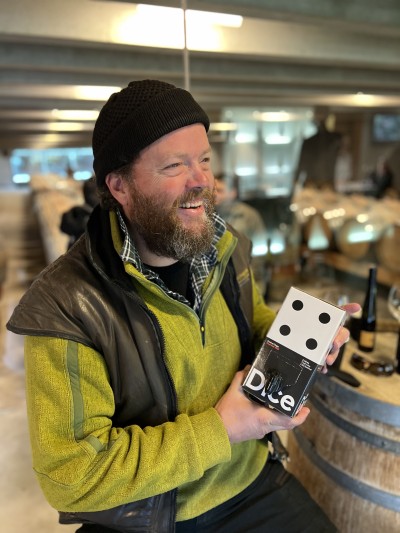
Winemaker James Dicey hopes decision makers think beyond this generation's gains.
"The sort of visceral response to it is one of caution, but also recognition of the need for progress," he says.
"We've built our wine industry in Bannockburn on the remnants of mining. We planted vineyards over mine tailings."
But arsenic, extracted as part of the gold mining process and then left behind, is a worry for both Mr Dicey and Mr Johnson.
"You've got a huge amount of toxic waste sitting there on a hillside, on a fault line," Mr Johnson says.
"It's just a ticking time bomb."
Mr Dicey says the issue of arsenic is his "biggest concern" when it comes to any large scale mining operation in the area.
"Because long after the value has been extracted out of the ground, the environment still copes with what's there.
"The night lights, the visual scar on the landscape, the explosive noises, the traffic movement, that's while it's mined and that's something a generation will have to put up with. My concern is more intergenerational."
He says Santana Minerals is just an "ephemeral collection of shareholders and investors".
"Once they're done and dusted, and gone, and the money's gone, what's been left behind and have we managed that process to make sure it's sufficiently controlled."
However Mr Spring does not share their concerns saying controlling the effects of any potential contaminant is "bread and butter stuff for the resource industry".
"All these things are well understood. The consent process that's been going over the last 30 odd years of the RMA for various mining projects sought to understand and mitigate and control those effects."
He says arsenic is present with the gold and ultimately it does end up being stored in the tailings at the mine site, but a whole range of experts work to "apply their toolbox of tools to ensure that arsenic is in a form that stays in the tailings bank and that it is stable for a long period of time".
The mine site would be located on Thompson Gorge Road in the Rise and Shine Valley.
"So tucked up right up into the Dunstan Mountains, on the Clutha side of the catchment," Mr Spring says.
"In terms of what you'll see if you're out on State Highway 8, looking back into that valley from any particular vantage points, you'll probably see very little. You'd have to know where to be looking, even at nighttime."
He says he has already been speaking with night sky advocates lobbying for dark skies, and he plans to keep knocking on doors to address people's concerns.
"We'll be doing as good a job to blend into the landscape as we can, albeit being the fact that it is mining, so we do leave a mark on the land."
He pushes back at the suggestion the mine signals the "industrialisation" of the iconic Central Otago landscape.
He sees what is on the cards as "the ongoing economic development of Otago" instead. And, he points out, that economic development was initially based on gold, anyway.
"There's lots of relics of that bygone era out there, including right next to us at Bendigo Reefs."
Social licence
He acknowledges change can be confronting for some, but says it is already happening all around the region.
"Look at the hydro lake - that's a change. The tops of our mountains, where appropriate, we've got ski fields - that's a change.
"Yes, ours is a much more intense activity, but on a relatively small scale."
He picks the mine site would be approximately three times the size of the existing quarry operating on the edge of Lake Dunstan over Lowburn way.
Mr Spring says having social licence is "very important" for the company.
And for him it is also personal.
"This is my home. I will be very proud of this project, this mine, once it is underway."
He thinks social licence is gained from "conversations and relationships and a lot of hard work".
"The company and I have no qualms about that. We understand that we've really only just begun. The team who made the discovery did a great job. I was brought on as a mining engineer to get this into production and getting a social licence is just part of that whole process."
He expects in the next few months to be able to start making public some of the research that has been underway related to the site and mining impacts.
"The reporting hasn't quite gotten to the point where we've got good data to share."
Mr Spring says the company is planning on at least eight years of extraction at the mine, with a crew of between 250 and 280 people working there.
During the early construction phase, he'll be needing closer to 60 workers, but that could peak with as many as 150.
He says these set up staff will be specialised workers that move around the globe on these sorts of projects; once it is up and running he picks some of his workers will be those currently in "fly in and fly out" roles in Australia.
He thinks some Kiwis will be lured back to New Zealand soils from overseas jobs in mines.
In a scoping study released to the Australian Stock Exchange in April Santana Minerals reveals plans to recover 1.12 million ounces of gold at the site - at current rates for gold per ounce, that is more than $4.4 billion worth.
Last month, the company listed on the New Zealand stock exchange.
Mr Spring says close to 40 percent of its shareholder base was already New Zealand-based to begin with, and he estimates 60 percent of the companies gross profits will stay in the country.
Main image: Hayden Johnson worries a large scale mining operation will 'industrialise' iconic Central Otago scenery at Bendigo that as a wine producer he leverages off.





